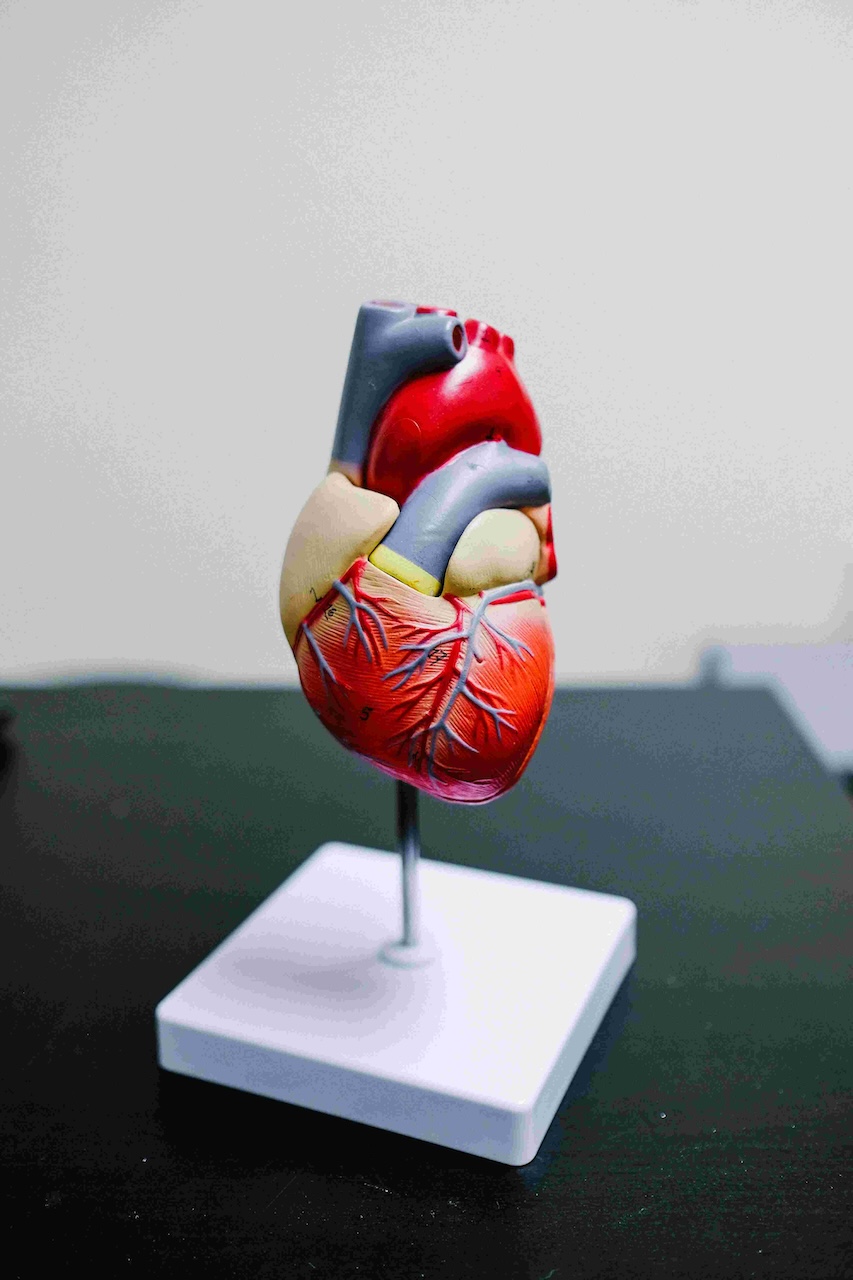
In today’s digital age, the impact of a poor posture has become a widespread issue affecting millions globally. Prolonged sitting at computers, excessive use of electronic devices, or lack of proper ergonomics can lead to poor posture. Poor posture can have extensive effects on physical health and overall well-being. This article will explore the impacts of poor posture on the body, methods of prevention, and effective correction strategies. Additionally, we will comprehensively discuss nutritional recommendations that support musculoskeletal health.
Understanding poor posture
Poor posture is a condition where the body is not properly aligned, leading to tension and imbalance. It is often characterized by slouching, forward-tilted head, rounded shoulders, and protruding abdomen. These alignment issues can affect various body regions and lead to long-term health problems.
Physical effects of poor posture
The physical effects of poor posture are broad and multifaceted. Here are some primary impacts:
Back and lower back pain:
Poor posture, especially during prolonged sitting or standing, can lead to back and lower back pain. This can increase pressure on the spine, causing excessive strain on muscles and ligaments.
Neck and shoulder pain:
A forward-tilted head and rounded shoulders can cause tension and pain in the neck and shoulders. This condition can lead to excessive muscle strain and even nerve compression.
Headaches:
Poor posture can lead to muscle tension and tension headaches. Excessive tension in neck and shoulder muscles can increase the frequency and severity of headaches.
Digestive issues:
Postural problems can put pressure on the abdominal area, leading to digestive issues. Particularly, a forward-tilted posture can cause acid reflux.
Breathing difficulties:
Poor posture can compress the chest cavity, making breathing difficult. Deep and effective breathing can become challenging.
Joint problems:
Prolonged poor posture can cause joint and muscle pain. Specifically, hip and knee joints can be affected by posture issues.
Psychological and mental effects of poor posture
Poor posture affects not only physical health but also psychological and mental well-being:
Loss of confidence
Slouched posture can impact personal confidence and create discomfort in social interactions. Poor posture often reflects a lack of self-confidence and low self-esteem.
Stress and anxiety
Physical discomfort, particularly back and neck pain, can increase stress and anxiety levels. Poor posture can trigger these emotional and mental health issues.
Focus and concentration issues
Poor posture can cause physical discomfort, leading to focus and concentration problems. Especially during prolonged sitting, postural issues can contribute to mental fatigue.

Preventive measures for poor posture
To minimize the effects of poor posture and promote a healthy stance, some preventive measures include:
Ergonomic adjustments:
Arrange your workspace ergonomically. Your computer screen should be at eye level, your chair should provide lumbar support, and your feet should rest flat on the floor.
Regular exercise:
Engage in regular exercise to strengthen your posture. Exercises that strengthen the back, core, and shoulder muscles can improve posture.
Awareness and posture corrections:
Be mindful of your posture throughout the day and make corrections as needed. Taking breaks and maintaining proper posture while sitting for long periods is crucial.
Posture-supporting accessories:
Use lumbar and back supports to aid in maintaining proper posture during extended sitting. These accessories can help you sustain good posture over long periods.
Posture exercises and yoga:
Activities like yoga and other posture exercises can enhance flexibility and strengthen muscles to support proper alignment. These activities can aid in relieving posture-related discomfort and improving alignment.
Posture and cultural differences: Comparing traditional and modern lifestyle habits
Posture is not just a personal habit but also a reflection of cultural and environmental factors. The posture habits prevalent in different cultures have been shaped by their historical, social, and environmental conditions. As societies transition from traditional to modern lifestyles, posture habits have also evolved.
Asian cultures
Sitting cross-legged and kneeling:
In traditional Asian cultures, particularly in Japan, Korea, and China, sitting cross-legged (seiza position) and kneeling are common. These positions, which involve direct contact with the ground, can help maintain the natural curvature of the body. However, prolonged sitting in these positions can lead to knee and hip discomfort.
Posture and alignment:
Asian cultures place significant emphasis on correct posture. Practices such as meditation and yoga promote maintaining balance in the body, which helps improve posture. Traditional Asian exercises and meditation techniques support proper posture and mental balance.
African cultures
Carrying loads and posture:
In traditional African cultures, carrying loads on the head or back influences posture habits. Carrying loads with a bent back is common, which can strengthen the back muscles. However, prolonged load carrying can lead to back pain and muscular issues.
Dynamic movements:
Traditional dances and daily activities involving dynamic movements can contribute to natural posture development. These movements strengthen muscles and increase flexibility but may also lead to certain postural issues.
Native American cultures
Sitting on the ground:
In Native American cultures, sitting on the ground (e.g., around a fire) and engaging in ground-level activities are common. This posture can provide a natural alignment but may cause back and knee pain with prolonged sitting.
Traditional rituals and posture:
During traditional rituals, correct posture and body alignment are highly valued. These practices can enhance cultural and spiritual health alongside physical well-being.
Comparing traditional and modern posture habits
Physical health impacts:
Traditional posture habits generally promote more natural movements and alignments, while modern lifestyles often lead to sedentary behavior and poor posture habits. Traditional habits can support muscle and joint health, whereas modern lifestyles may contribute to back, neck, and joint issues.
Posture and mental health:
In traditional cultures, the link between posture and mental health is supported through practices like meditation and rituals, while modern lifestyles often overlook this connection. Traditional practices enhance mental balance and overall well-being, whereas modern life may link stress and posture issues.
Environmental and social factors:
Traditional lifestyles align with environmental and social conditions, promoting natural movements and postures. In contrast, modern lifestyles may create environmental mismatches (e.g., non-ergonomic workspaces) that lead to posture problems. Traditional cultures often emphasize communal harmony, while modern cultures may focus more on individualism.

Nutritional recommendations
Nutrition also plays a vital role in mitigating the effects of poor posture and supporting musculoskeletal health. Here are some dietary suggestions:
-
Calcium sources:
Calcium supports bone health and muscle function. Examples include kale, broccoli, almonds, and sweet potatoes.
-
Omega-3 fatty acids:
Omega-3s can reduce inflammation and support joint health. Vegan sources include flaxseeds, chia seeds, and walnuts.
-
Magnesium:
Magnesium supports muscle function and can reduce muscle cramps. Rich sources include spinach, avocados, and pumpkin seeds.
-
Vitamin C:
Vitamin C aids in strengthening connective tissues and has antioxidant properties. Citrus fruits, kiwi, and strawberries are excellent sources.
-
Protein:
Adequate protein intake is essential for muscle repair. Vegan protein sources include lentils, chickpeas, tofu, and tempeh.
Poor posture and ergonomic adjustments
Home and workplace ergonomic adjustments
One of the most effective ways to prevent and improve poor posture is to make ergonomic adjustments. Proper ergonomic arrangements at both home and work can support a healthy posture and reduce posture-related problems.
At home, especially for those who spend long hours at a computer, creating an ergonomic seating arrangement is crucial. A good computer desk and chair can prevent back and neck pain. Ensure the desk height, screen position at eye level, and a supportive chair are considered. Sitting in a chair that supports the back and allows feet to rest flat on the floor can improve posture.
In the workplace, it is also beneficial to periodically check and correct posture by taking short breaks. Creating an ergonomic workspace can reduce lower back and back pain. Desks, chairs, and computer equipment at work should be arranged to support a natural posture.
Ergonomic furniture and tools:
Ergonomic furniture and tools are designed to maintain the body’s natural alignment and prevent posture problems. Ergonomic chairs, lumbar supports, and adjustable desks can be used at home and in the workplace. Additionally, proper desk height and screen positioning can reduce stress on the body and enhance productivity.
Exercise routines for a better posture
Strengthening back and core muscles
Exercises that strengthen the back and core muscles are highly effective for correcting poor posture and preventing back pain. Strong back muscles support the spine and promote proper posture. Core muscles stabilize the spine and enhance posture.
Exercises such as deadlifts, rows, and planks strengthen the back muscles and support a correct posture. Core-strengthening exercises include crunches and leg raises, which can help improve posture by strengthening the muscles around the lower back.
Stretching and flexibility exercises
Stretching and flexibility exercises can reduce muscle tension and improve range of motion. Stretching helps relax muscles and prevents stiffness, which can improve posture. Activities like yoga and Pilates are beneficial for both stretching and strengthening. Stretching exercises targeting the back and shoulders can alleviate posture-related discomfort and reduce pain.
Lasting impacts of a poor posture in children and adults
Posture issues in children:
Poor posture in children often results from prolonged sitting, increased computer use, and improper use of backpacks. Children may not always recognize correct posture, so monitoring and educating them by parents is essential. Suitable sitting positions, back supports, and regular exercises can help prevent posture problems in children.
Additionally, adopting ergonomic school habits and using properly fitting backpacks can prevent long-term posture issues. Limiting screen time and encouraging regular physical activity can also benefit children’s posture.
Posture issues in the elderly:
Posture problems in older adults can arise as a natural consequence of aging. Age-related changes like osteoporosis, muscle loss, and joint stiffness can lead to poor posture. Posture exercises, balance, and coordination activities are important for improving posture in older adults. Creating a safe home environment and preventing falls are also crucial.
Posture correction technologies and accessories
Posture correction technologies:
Technologies aimed at improving posture have become a part of modern life. Smartphone apps, posture trackers, and computer programs can help users monitor and improve their posture. These technologies can provide reminders for correct posture during daily activities and help prevent posture problems.
For example, some apps can monitor users’ sitting positions and send corrective alerts. Additionally, some smart devices can detect posture issues and offer suggestions for improvement.

Conclusion
Poor posture is a multifaceted issue that can significantly impact various aspects of physical and mental health. It is more than just a cosmetic concern; it carries serious implications for overall well-being. Physically, poor posture can lead to chronic pain in the back, neck, and shoulders, and can exacerbate or contribute to conditions such as herniated discs, arthritis, and musculoskeletal disorders. It can affect the body’s natural alignment, leading to strain and discomfort over time. Moreover, poor posture often disrupts the body’s ability to breathe deeply and can interfere with digestion, contributing to additional health complications.
On a psychological level, poor posture has been linked to decreased self-esteem and confidence. Individuals with poor posture may feel more vulnerable or less assertive, impacting their social interactions and overall mental health. The discomfort and pain associated with poor posture can also contribute to increased stress and anxiety, further diminishing one’s quality of life.
Modern lifestyles, characterized by long hours of sitting, excessive use of digital devices, and insufficient physical activity, often exacerbate poor posture. This underscores the importance of addressing poor posture not merely as a superficial issue but as a critical aspect of maintaining long-term health and wellness.
Addressing poor posture requires a proactive approach that involves both awareness and action. Here are key steps you can take to improve your posture and, consequently, your overall health:
Be mindful of your posture
Regularly check in with your posture throughout the day. Whether sitting, standing, or walking, ensure that your back is straight, shoulders are relaxed, and head is aligned with your spine.
Create an ergonomic workspace
If you spend long hours at a desk, invest in ergonomic furniture and set up your workspace to support good posture. Your chair should provide adequate support for your lower back, and your computer screen should be at eye level.
Incorporate regular exercise
Engage in exercises that strengthen your core, back, and neck muscles. Activities such as yoga, pilates, and strength training can help improve your posture and increase flexibility.
Take frequent breaks
If you are sitting for extended periods, take regular breaks to stand, stretch, and move around. Simple stretches and movements can prevent stiffness and maintain your posture.
Consider professional guidance
Consult with a physical therapist, chiropractor, or ergonomist if you experience persistent pain or difficulty improving your posture. They can provide tailored advice and exercises to address specific issues.
Adopt healthy habits
Maintain a healthy weight, stay hydrated, and eat a balanced diet rich in nutrients that support musculoskeletal health. Proper nutrition can enhance muscle function and overall well-being.
By integrating these practices into your daily routine, you can mitigate the adverse effects of poor posture and enhance your quality of life. Start today by assessing your current posture habits and making small, manageable changes. Remember, improving your posture is an investment in your long-term health and happiness. Make the commitment to take action now and experience the positive transformation in your overall well-being.
Ready for some simple changes that can make a big difference?
Embracing a healthier lifestyle doesn’t have to be overwhelming. With even small changes and some conscious moves you can make a real difference – step by step.
Join the conversation and share your experiences with us! Follow our page for more insights on nutrition, and strategies to enhance your overall well-being.
Subscribe to our newsletter, follow us on social media to let us know how you’re working towards a better posture!
Progesterone
What is Progesterone? Progesterone is a steroid...
Understanding Estrogen
Estrogen is one of the most crucial hormones for...
Hashimoto’s Disease
Introduction Hashimoto's disease, or...
Understanding the Thyroid: Functions, Diseases, and Dietary Considerations
Introduction The thyroid gland plays a...
TMAO: What It Is, Its Effects on Health, and Management Strategies
Introduction Trimethylamine N-oxide...
Understanding the Nervous System: Functions, Diseases, and Health Tips
The nervous system is a highly intricate and...
Understanding Oxidative Stress: Its Causes, Health Impacts, and Management
Oxidative stress is a biological condition that...
Reconsidering Extreme Diets: Why Paleo, Raw, and Vegan Might Not Be the Best Choice
In today’s fast-paced world, many people are...
How to Eat in the Right Order for Optimal Health
The order in which we eat our food can have a...










